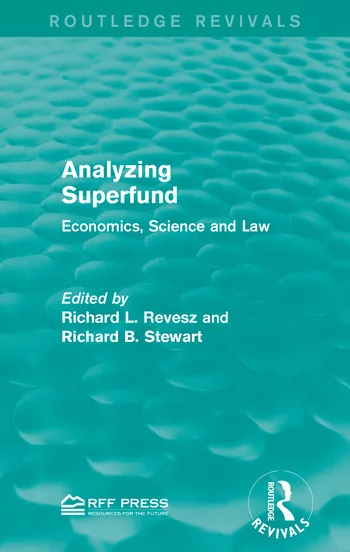Biden admin announces $19 million in Infrastructure Law funding to address emerging contaminants in Maine
Funding from the bipartisan law will focus on remediating Maine drinking water of per- and polyfluoroalkyl substances (PFAS).

Photo by Leon Bredella on Unsplash
On Feb. 13, the U.S. Environmental Protection Agency (EPA) announced $18,914,000 from President Biden's Bipartisan Infrastructure Law to address emerging contaminants, like Per- and Polyfluoroalkyl Substances (PFAS) in drinking water in Maine. This investment, which is allocated to states and territories, will be made available to communities as grants through EPA's Emerging Contaminants in Small or Disadvantaged Communities (EC-SDC) Grant Program and will promote access to safe and clean water in small, rural, and disadvantaged communities while supporting local economies.
"Too many American communities, especially those that are small, rural, or underserved, are suffering from exposure to PFAS and other harmful contaminants in their drinking water," says EPA Administrator Michael Regan. "Thanks to President Biden's leadership, we are investing in America and providing billions of dollars to strengthen our nation's water infrastructure while safeguarding people's health and boosting local economies. These grants build on EPA's PFAS Strategic Roadmap and will help protect our smallest and most vulnerable communities from these persistent and dangerous chemicals."
"Today's grant announcement is one significant step in EPA's comprehensive PFAS Roadmap to support our state partners as we aggressively tackle PFAS in drinking water, protect public health, and provide critical information quickly and transparently," says EPA New England Regional Administrator and Co-Chair of EPA's Council on PFAS David W. Cash. "This funding from the Bipartisan Infrastructure Law will target resources to small or disadvantaged communities most in need of assistance and will speed up our important work reducing PFAS and other emerging contaminants in drinking water, especially in communities that are challenged by lack of capacity and funding."
"Maine is a leader in addressing PFAS contamination, but there is a lot more work left to do," says Governor Janet Mills. "Maine people deserve safe drinking water and these Federal funds will be instrumental in helping my Administration identify PFAS contamination across Maine and take steps to mitigate it."
"Maintaining access to clean, reliable drinking water is essential to protect the health of the public, our environment, and the economy," says U.S. Senator Susan Collins. "Americans should be able to have confidence that the water from their faucets is safe to use. Although Maine is home to some of the cleanest sources of water in the country, the increasing prevalence of pollutants like PFAS require action to keep our drinking water pure. Senator Shaheen and I co-authored the provision that includes this funding as part of the Bipartisan Infrastructure Law, and I am pleased to see the implementation of these resources to protect water supplies in Maine."
"Maine people deserve clean, safe, and healthy water," says U.S. Senator Angus King. "This significant new investment from the Bipartisan Infrastructure Law will help address the PFAS contaminants in our water and protect the long-term health of communities across the state. There is still more work to be done, but this funding is an important first step and a great example of the game-changing investments of the bipartisan bill."
The Bipartisan Infrastructure Law invests $5 billion over five years to help communities that are on the frontlines of PFAS contamination reduce PFAS in drinking water. EPA announced the funds for Maine as part of an allotment of $2 billion to states and territories that can be used to prioritize infrastructure and source water treatment for pollutants, like PFAS and other emerging contaminants, and to conduct water quality testing.
EPA is also releasing the Emerging Contaminants in Small or Disadvantaged Communities Grant Implementation document. The implementation document provides states and communities with the information necessary to use this funding to address local water quality and public health challenges. These grants will enable communities to improve local water infrastructure and reduce emerging contaminants in drinking water by implementing solutions such as installing necessary treatment solutions.
Today's actions represent a significant milestone within the Biden-Harris Administration's commitments to combat PFAS pollution and safeguard drinking water, and specifically EPA's October 2021 PFAS Strategic Roadmap. Under the Roadmap, EPA is working across the agency to protect the public from the health impacts of PFAS. EPA has taken a number of actions to deliver progress on PFAS including:
- Proposing to designate two PFAS as CERCLA hazardous substances. If finalized, this will be a critical step toward increasing transparency around releases of PFAS and holding polluters accountable for cleaning up their contamination.
- Releasing drinking water health advisories. Acting in accordance with EPA's mission to protect public health and keep communities and public health authorities informed when new science becomes available, the Agency issued drinking water health advisories for four PFAS.
- Laying the foundation to enhance data on PFAS. This included an order under EPA's National PFAS Testing Strategy requiring companies to conduct PFAS testing, and nationwide sampling through the Unregulated Contaminant Monitoring Rule for 29 PFAS in public drinking water systems.
- Expanding the scientific understanding of PFAS. The Agency issued more than 30 scientific publications by EPA researchers and released EPA's PFAS Thermal Treatment Database.
- Translating the latest science into EPA's cross-agency PFAS efforts. This included updating EPA's contaminated site cleanup tables, developing new PFAS methods and conducting toxicity assessments, and issuing draft national recommended water quality criteria to protect aquatic life.
- Continuing engagement with the public. EPA's PFAS work was informed by public webinars, stakeholder meetings, Congressional testimony, and engagement with EPA's federal advisory committees.
In addition to this new grant, EPA is also working to propose a PFAS NPDWR in the coming weeks. The draft proposed rule is currently undergoing interagency review and EPA will issue the proposed rule for public comment when it clears the Office of Management and Budget (OMB). The agency anticipates finalizing the rule by the end of 2023. Together, with today's announcement, these actions highlight EPA's commitments outlined in the PFAS Strategic Roadmap to protect public health and the environment from the impacts of PFAS. They also illustrate the benefits of investing in water—protecting public health and the environment, addressing key challenges facing communities, and creating jobs.




